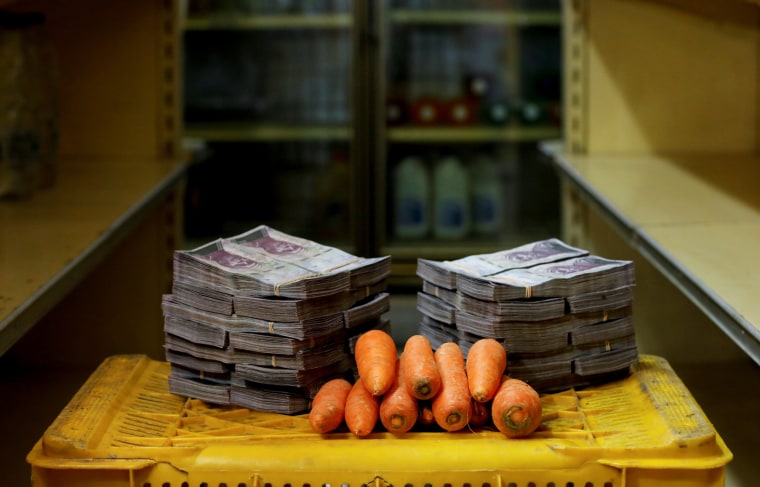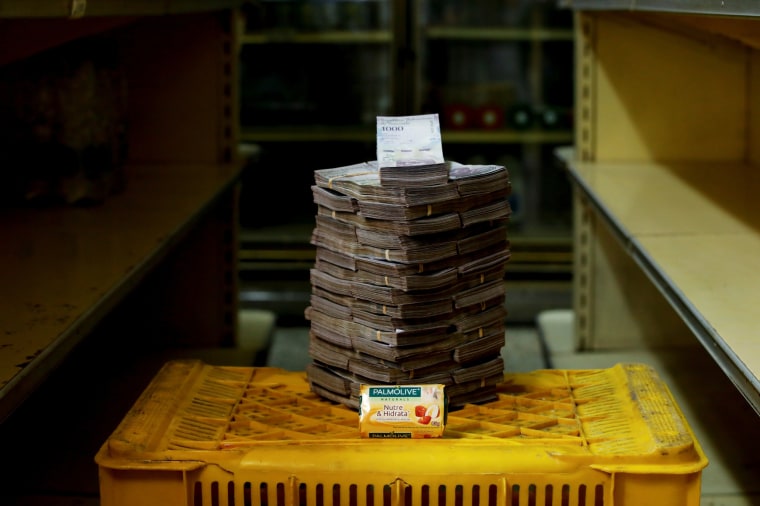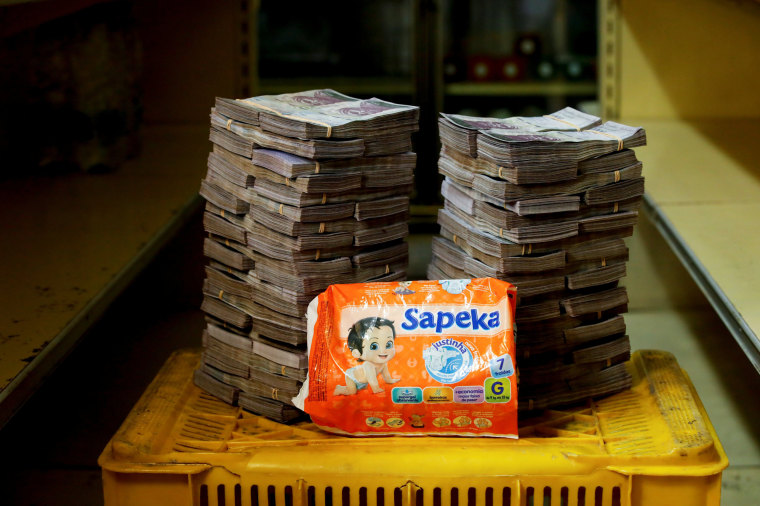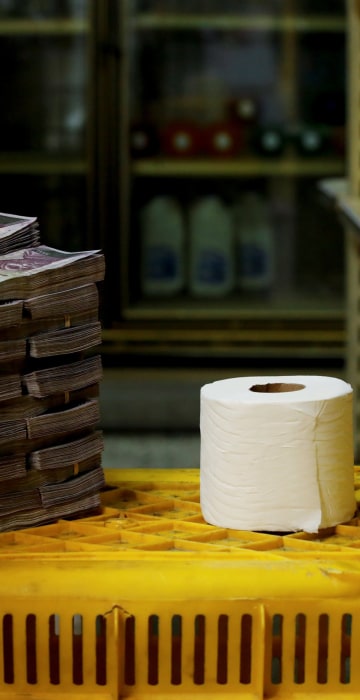
In Focus
See how many bills it took to buy a chicken in Venezuela
The once-booming nation is now suffering from Soviet-style product shortages and a mass exodus of citizens fleeing for other South American countries.
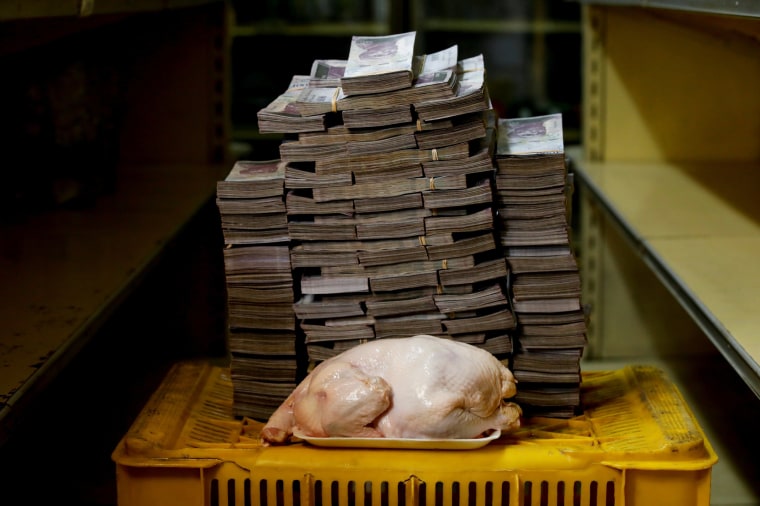
Banks closed Monday in Venezuela as they prepared to release the "sovereign bolivar," a new currency printed with five fewer zeroes in a bid to tame soaring inflation.
Here are a few pictures that illustrate the limited purchasing power of the old bolivar.
This stack of 14,600,000 bolivars, or about $2.22 U.S., would buy this chicken at a mini-market in Catia, a low-income neighborhood of Caracas on Aug. 16.
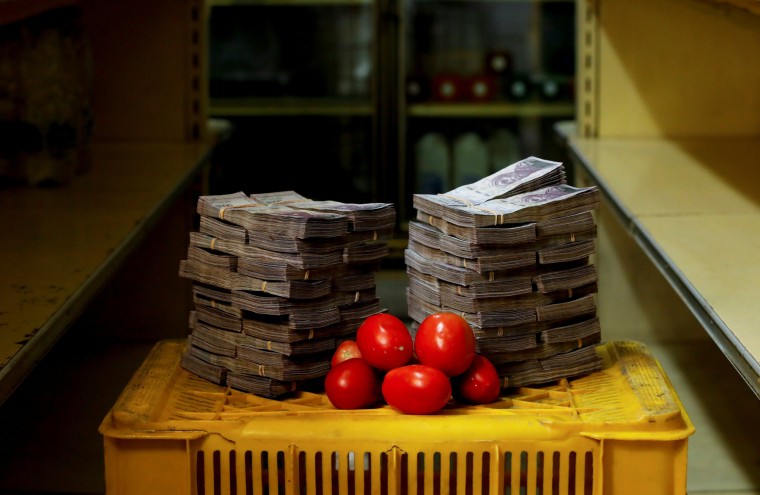
A kilogram, or 2.2 pounds, of tomatoes cost 5,000,000 bolivars, or 76 U.S. cents.
Venezuela was once among Latin America's most prosperous nations, holding the world's largest proven oil reserves, but a recent fall in oil prices accompanied by corruption and mismanagement under two decades of socialist rule have left the economy in a historic economic and political crisis.


A kilogram, or 2.2 pounds, of meat was 9,500,000 bolivars, or $1.45.
President Nicolas Maduro, re-elected to a second term in May in a vote widely condemned as rigged, says his government is the victim of an “economic war” led by political adversaries with the help of Washington, and accuses the United States of seeking to overthrow him.
The United States has denied the accusations. But it has described Maduro, a former bus driver and union leader, as a dictator and imposed several rounds of financial sanctions against his government and top officials.
